HISTORY OF GYOTAKUFor centuries in all parts of the world, impressions of nature have been created first naturally as fossils and then by man. Australian rock art by Aborigines depicting plants and hands on cave walls are probably the oldest prints made by man. With the invention of paper, T’A-PEN or “stone rubbing” in China prior to 200BC is in evidence. The first plant printing found on paper is from the early 1100’s on a Syrian manuscript. Japan has the earliest fish printing done in the 1800s. Although the technique is ancient, the Japanese word which translates to “GYo fish – TAKU reclamation” is a modern term designated by the Gyotaku No Kai (Fish Printing Association) in Tokyo. There are many tales of how Gyotaku began. Perhaps the most popular is of an emperor in Japan that wanted an accurate account of his record catch. He commissioned a print to be made. This was a wise decision considering how much a fish can grow after it has been caught and the tale is spun from one person to another. Basically the direct method of Gyotaku involves inking a fish, then laying a sheet of paper or cloth over the subject. Pressure is applied with fingers onto the paper thereby transferring the ink. When done properly this technique is able to record the most minute detail and patterns of the subject. After the paper is pulled from the subject to reveal the print, an eye is painted to complete the work. Although technically a mono print, each is an original. Derek Y. Wada has been a board member of the Nature Printing Society, an international organization devoted to nature and the art of Nature Printing. Born and raised in Hawaii, Derek has been blessed with vivid memories. Photography and fishing tales weren’t enough. Gyotaku enables him to share the beauty of nature along with very special moments in his life. |
